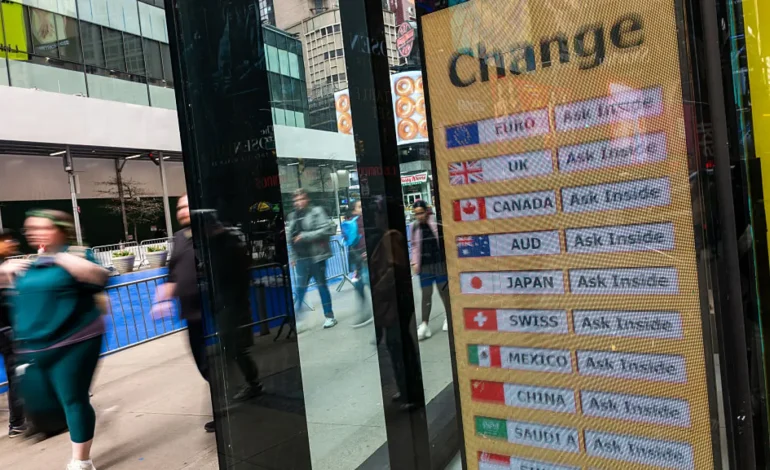Investors are adopting a more cautious stance toward the US dollar as markets brace for the impact of President Donald Trump’s new tariff policies.
Currency strategists and analysts note that traders are positioning for potential dollar weakness, favoring other major global currencies such as the euro, British pound, and Australian and New Zealand dollars.
While the dollar index, which measures the greenback against a basket of key global currencies, remained steady early Wednesday, recent trends suggest a shift in sentiment. The dollar’s strong rally, which began in late 2024 and peaked in mid-January, has shown signs of reversal in recent weeks.
“Currency trader positioning is turning bearish on the dollar,” Joseph Brusuelas, chief economist at RSM US, said in a research note Monday.
He pointed to growing confidence in alternative currencies, particularly the euro, as signs of waning optimism in the US currency.
Bank of America’s Athanasios Vamvakidis expects the dollar to rally in the immediate aftermath of the tariffs but sees this as a potential selling opportunity.
“For the dollar, we have been and remain bearish for the year as a whole,” he stated.
He suggested that long-term risks—including potential stagflation—could weaken the greenback.
The euro has been attracting investor interest, with net positioning shifting in favor of the currency over the past three weeks. Analysts at Mizuho Bank expect the euro to dip in the short term but recover later in the year, potentially reaching $1.12 or higher by year-end.
The British pound could also see relative strength, as Trump’s tariff policies have primarily targeted the European Union, with the UK potentially spared from significant trade actions. Analysts at Maybank recently raised their forecast for the pound, predicting it could reach $1.26 by the end of the year and climb to $1.31 in early 2026.
Market watchers are also eyeing potential upside for the Australian and New Zealand dollars, which could benefit from economic stimulus measures in China. Both countries have lower debt-to-GDP ratios than other Western economies, providing them with more flexibility for domestic policy responses.
Alex King, a former foreign exchange trader and founder of Generation Money, noted that Australia and New Zealand are “less connected to the trade war narrative,” which could make them attractive for investors looking to hedge against US tariff risks.
Despite the caution surrounding the dollar, immediate moves will likely depend on the specifics of Trump’s tariff policies, which are set to be unveiled Wednesday evening. The administration has suggested broad-based reciprocal tariffs, with reports indicating potential across-the-board duty hikes of around 20% on imported goods.










The latest news in your social feeds
Subscribe to our social media platforms to stay tuned